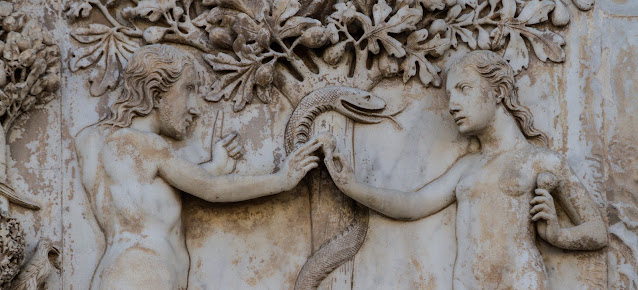Snake Symbolism and Mythology
Snake Symbolism and Mythology

Symbolism
Serpents and snakes have been associated with both good and evil throughout history and different cultures, representing life and death, creation and destruction. The Ancient Chinese connected serpents with life-giving rain, as many live in or around the water, as well as traditional beliefs in Australia, India, North America and Africa link serpents with rainbows and in turn, with rain and fertility.
Fertility, rebirth, transformation, immortality and healing are all things commonly associated with snakes due to the way they shed their skin in order to grow. The act symbolises getting rid of your old life and past mistakes in order to grow and evolve. The Hopi people of North America performed an annual snake dance to celebrate the union of Snake Youth (a Sky spirit) and Snake Girl (an underworld spirit) and to renew the fertility of nature. During the dance, live snakes were used, and were later released into the fields to guarantee good crops. To the Hopi, snakes symbolised the umbilical cord, joining all humans to Mother Earth.
Although snakes symbolise many good things, they also can be symbols of death in many cultures, and this is the way most people view them in modern times. Anthropologist Lynne Isbell says that for millions of years, snakes were the only significant predators of primates, which explains why a fear of snakes is one of the most common phobias worldwide and why the symbol of a snake is so prevalent in world mythology as an image of danger and death.
Mythology
Medusa is arguably the most well known myth to be connected to snakes. Medusa was one of the three Gorgons, but the only mortal, born to Phorcys (sea god of the dangers of the hidden deep) and Geto (the goddess of sea monsters and the dangers of sea). Medusa was described as a beautiful maiden, but after being raped by Poseidon in Athena's temple, Athena sought revenge on Medusa (the motive as to why is unclear) and turned her hair into snakes. This caused anyone to look at Medusa to be turned into stone, resulting in her being banished, and later, beheaded. It is rare nowadays to find anyone who hasn't heard at least some of this story, and pushes the idea that snakes are dangerous and are used for evil.
Another well known snake myth is that of the snake in the gardens of Eden. This story tells the reader of a snake convincing Eve to eat fruit from the 'Tree of Knowledge of Good and Evil', who in turn convinces Adam to do the same. As a result of this, God banishes Adam and Eve from the garden and curses the snake. This story tells us that snakes a cunning and deceitful, similar to how some snakes trick their prey into coming closer by performing 'aggressive mimicry'. This is when the snake uses part of its own body to mimic the prey of the prey they are luring, for example, mimicking a worm to entice a lizard closer.

Within Hinduism, Buddhism and Jainism, there is a semi-divine race known as the naga (Sanskrit for serpent) which were half-human and half-cobra, but they could shift from to be fully on or the other. They were potentially dangerous, but often beneficial to humans, and lived in an underground kingdom called Naga-loka or Patala-loka which is filled with huge palaces and decorated with precious gems. The deity Brahma sent them all to this kingdom after their population grew too large on Earth and commanded them to tie only the truly evil or those destined to die prematurely.





Comments
Post a Comment